MHD Turbulence & Dynamos
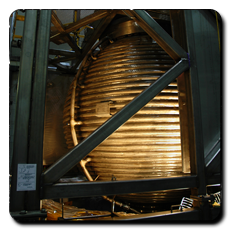
Bodies of rotating conductive fluids are found in many astrophysical and planetary systems, and often exhibit self-generating magnetic fields, called dynamos. Laboratory experiments can provide a great deal of data in parameter space beyond that reached in practical theoretical studies and that occupied by planets and stars.
Machine Learning Electronics

We design and optimize hardware specifically for machine learning computations. Our applications of interest include classification of radio frequency signals and prediction of complex phenomena like turbulence.
Rotating Turbulence
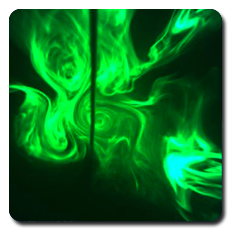
Rotation has a profound effect on fluid flow, allowing the fluid to exhibit Coriolis-restored internal wave motions, inertial waves and related Rossby waves. These waves give rotating flow a very different character from non-rotating flow. The influence of rotation on strong fluid turbulence is an interesting problem that is relevant to systems like Earth's atmosphere and oceans, where fluid inertia and Coriolis accelerations are both extremely important.
Granular Electrification

In the atmosphere, suspended particles (sand, dust, water droplets) interact with each other and electrify. In some cases, this results in lightning. Many groups are interested in the mechanisms behind granular electrification from the point of view of two-body particle-particle interactions. Meanwhile, our research focuses on the collective particle phenomena that might influence electrification.
Past Research
Quantum Turbulence
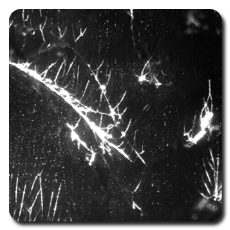
The ability for bosons to condense into the ground state of a system at low temperatures can cause phase transitions which produce phenomena such as superconductivity, Bose-Einstein condensation, and superfluidity. Phase defects occur in these otherwise ordered states. In the case of superfluidity, quantized vortices of the superflow form along filaments (line defects). We seek to understand the dynamics of these vortex defects.
Magnetorotational Instability
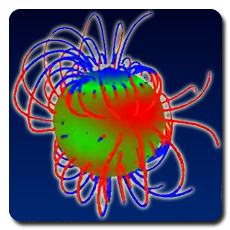
Diverse astrophysical phenomena involve the close interplay of rotation and magnetic fields.
There is both theoretical and computational evidence for the importance of small magnetic fields in destabilizing differential rotation: a process now often called the magnetorotational instability. This phenomena is invoked to explain how rotating clouds proceed to collapse in star formation.
Turbulent Dissipation

Turbulent dissipation is the viscous conversion of mechanical energy to heat. Imagine putting energy into a fluid system by dragging your hand through it. Behind your hand, you see circular vortices forming. These vortices spin off smaller vortices which in turn spin off even smaller vortices. In this cascade, kinetic energy is carried down to smaller and smaller scales. At a particular scale, viscosity smooths out the flow, stopping the cascade and converting the mechanical energy to heat. When you stop moving your hand, the energy dissipation quickly stops the fluid motion. This process plays a central role in modeling and understanding turbulent flows.
Nonlinear Surface Waves

A free surface of a fluid undergoing Faraday excitation exhibits highly focused surface waves which form thin fluid filaments, or jets, that can eject droplets and spray from their tips.
We are exploring the mechanism by which such singularities are formed.From this study, we hope to better understand ocean waves and the air-ocean interaction, as well as guide the applied mathematics of singularity formation in nonlinear systems.
Ingassing in Breaking Waves
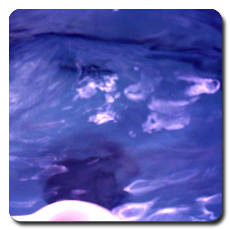
Understanding the transfer rate of atmospheric gasses is directly applicable to natural processes, such as how greenhouse gasses are absorbed into oceans. There have been extensic studies on gas transfer due to capillary waves created by Faraday excitation and wind. However, the oceans are mainly dominated by gravity waves. Tansfer due to gravity waves appear to be a strong function of frequency and amplitude.
Nonlinear Electronics

We have found deterministic chaos in electronic devices comprised of high-speed digital gates. These electronic chaos signal has a ultra-wideband frequency spectrum and therefore can be used as an inexpensive source in spread-spectrum communication systems.
